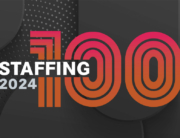Relationships are the foundation of the industry. Good relationships with both clients and candidates are what drive the bottom lines of staffing firms. But in an age of social media, how can firms compete effectively?
Marketing automation. Proponents say it delivers a number of benefits — including to those in the staffing industry who use it. Its functions include personalizing messages to sales prospects and tracking progress through the sales funnel.
There are many explanations around what marketing automation is. Here is one: Marketing automation refers to the software that exists with the goal of automating marketing functions. Repetitive tasks such as email, social media and other website actions are not just made easier but companies are able to market effectively on multiple channels online.
To find out more about marketing automation, and what it means to the staffing industry, we spoke with several marketing executives. Here is what they have to say:
Building Relationships
“Marketing automation really revolves around utilizing technology to build relationships with your audiences,” says Adam Bleibtreu, chief marketing officer of ASGN Inc.
Describing the process, Bleibtreu says it might start with a client or candidate visiting a staffing firm’s website — with the site putting a “cookie” computer file on their browser. That gives marketers an insight into browser history. Then it moves to segmenting the audience.
“Through automated marketing technologies, you can segment audience by skill set, geography and job classification,” Bleibtreu says. “Then it’s really up to marketing teams to build an enduring relationship with that candidate.”
That might include taking names and email addresses of people who fit a desired profile and loading them into a marketing automation tool. Marketers can then send emails to those on the list — automatically tracking responses to the email, or lack thereof; finding subject lines that got recipients to open them; and determining whether a particular email recipient did the task in the email, such as reading it or clicking on a link.
“We just want to be top of mind when you look for an opportunity,” Bleibtreu says. That works better than approaching somebody completely cold.
A marketing flow chart for staffing firms typically looks like this:
- Get an order — by building relationships with clients using automated techniques.
- Fill that order — by building relationships with highly qualified, available candidates, again using automated techniques.
- Get another order from the client — continue the relationship with the client, also known as “nurturing” the relationship.
- Get contracts extended — leverage relationships to increase assignment length for contingent workers.
For recruiting, marketing automation can also maintain relationships with qualified candidates who may not have landed a specific role. Of 100 people responding to a job ad, only one gets the job. And while in the past it may have been overly labor intensive to maintain relationships with the remaining 99, marketing automation enables that to happen — so you’re not throwing out 99 cents of every dollar you spend on job board advertising.
But don’t count humans out. While the sales and recruiting marketing process is automated, humans still play crucial roles.
“None of that works if you don’t build a company with an amazingly strong culture and a sales and recruiting process,” Bleibtreu says. “Having the greatest process in the world without the right people to manage it is a recipe for a Toys’R’Us story.”
Marketing automation isn’t the same as artificial intelligence or machine learning — although those technologies can be used in the marketing automation process, for example, the AI chatbot Mya for staffing firms, he adds.
Relevance, ROI
“Marketing automation is the ability to automate many marketing functions,” says Shelley Harrison, chief marketing officer of Brightfield Strategies. “It enables a staffing company to stay in front of their prospects, providing them with relevant information in an efficient and effective manner.”
The delivery of that content can be automated and sent via email or social media. And the content can be personalized in any number of ways, but can include dividing recipients by staffing industry vertical, where they are in a sales funnel, by role or in other ways. That process would be too complex for one person to handle manually.
Also, in the past, prospects would get brought into the sales process through a salesperson, likely making a cold call. Now, prospects come to companies having done their own research, and marketing automation helps you get in front of those people with information that’s relevant to who they are and what they are seeking. And, when partnered with customer relationship management software, it lets you know where they are going on your website, whether they have been to events and how many contacts they have had with salespeople.
“You have a much more holistic view of what is happening with this prospect,” Harrison says.
She also stresses salespeople are still needed, even with automation. Doing without salespeople only works where the cost is inconsequential; that is, where people do not feel horrible if they’ve made a mistake.
Measuring return on investment is also an important part of marketing automation, although a lot of companies haven’t taken that step yet. And putting a marketing automation program in place is an involved process, best used in conjunction with a CRM. For this to work properly, you need to make sure the data on your prospects are up-to-date and correct. That can be a tall order for a small or undersourced marketing department.
“It takes a certain level of commitment, both financially and from a resource perspective,” Harrison says. “If it’s built upon outof- date or incorrect information, that can lead to headaches or needless expense.”
She adds, “You can’t put your big toe in marketing automation; you have to do it or not.”
Connect and Engage
“I would define marketing automation as tools that allow you to connect and engage with your target audience and automating the process around that engagement,” says Matt Rivera, VP marketing and communication of Yoh.
In the past, the technology was just simply using the phone. But marketing automation technology today enables staffing firms to organize, schedule, execute and analyze marketing initiatives with several technologies.
Rivera gives an example of a marketing automation process through the actual sale of an MSP contract: The process began with recording a lead from a webinar produced by Yoh; the lead then received 14 emails, nine of which were opened. The lead also read three blogs from links within the email, downloaded two ebooks and watched one video series on the Yoh website. In addition, the lead visited Yoh’s MSP webpage.
Those 30 interactions were tracked through a marketing automation tool, and a salesperson was contacting the lead as well through the process. Ultimately, the MSP sales process was completed in seven months — a short timeframe for a complex sale.
“You’re able to target better and you’re able to engage with them on a more frequent and targeted basis,” Rivera says, and that’s one of the factors that helped shorten the sales process in this case.
Staffing firms can also walk their sales prospects through the sales funnel with marketing automation. More general information is at the top of the funnel, then more and more relevant information is provided as the customer continues.
It also allows for personalization of the information for the prospect.
“I think, like any industry, the staffing industry has evolved. It’s very competitive, there are low barriers to entry, and it’s very difficult sometimes to differentiate,” Rivera says. “The more you can tailor your message, the more you can engage directly with your customer, there’s going to be a benefit.”
And it’s a way to introduce the concepts of contingent labor management or RPO along with a staffing provider’s key differentiators.
“I would say the key to getting the most out of marketing automation is still a strong connection with sales,” he says. If marketing is putting information out, but sales isn’t following up, the campaign is probably not going to be successful.
Rivera says Yoh has a person whose primary job is to see that marketing and sales are connected.
Marketing automation “won’t take the place of sales, and it certainly won’t take the place of just figuring out how to be a good marketer, but it will help both.”
A Clear Snapshot
“From my perspective, marketing automation is a tool to identify and understand, communicate and nurture your customer,” says Gareth Saunders, global marketing director of Phaidon International.
Marketers can automate the process of sending out content or information on jobs. Over time, firms can develop a snapshot of the customer, enabling the firms to focus on providing information of importance.
“It enables you really to cater and personalize the experience,” he says. “It allows you actually to communicate with them more appropriately.” Staffing firms can then send more pertinent information.
In addition, firms can remain in contact with candidates who didn’t get one job but who could still be a fit for another.
“What I love the most, and where I see it benefit the staffing industry, is that personalization — nurturing and giving a great experience to both our clients and candidates.” While some may be concerned that technology knows everything about us, on the other hand it enables people to receive better information.
“We understand the boundaries and stick to fundamentals and the information we produce is relevant to the clients and candidates that we work with,” Saunders says.
The European Union has just rolled out its General Data Protection Regulation, or GDPR, which restricts how data can be gathered and gives citizens more rights regarding that data. While it offers new restrictions on companies’ use of clients’ data, Saunders says people will be able to benefit from marketing automation. Clients will still be able to take the journey, finding out more information about the company.
“It makes marketing clean again,” he says. Some areas of marketing had taken people’s data for granted, and there was a bit of loss-of-focus over why the data was collected in the first place. Under GDPR, individuals have control over their own data.
“It enables the consumer or the person who owns the data to take themselves on the journey,” he says.







